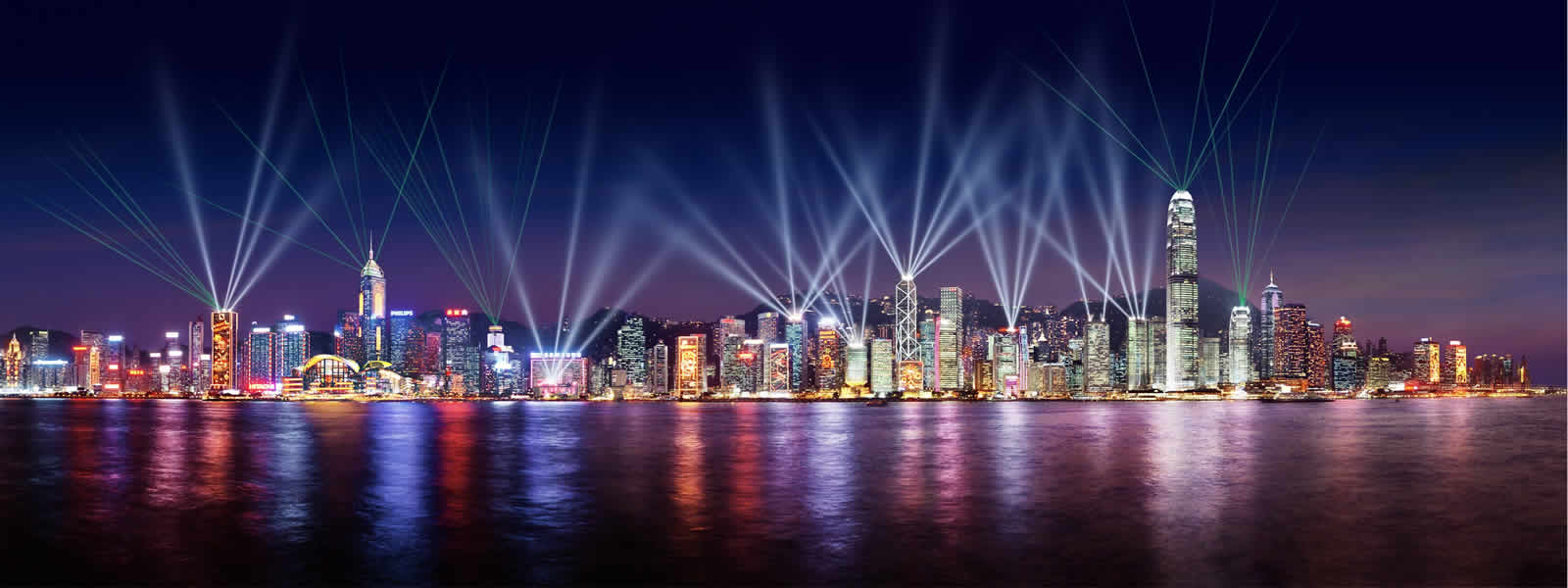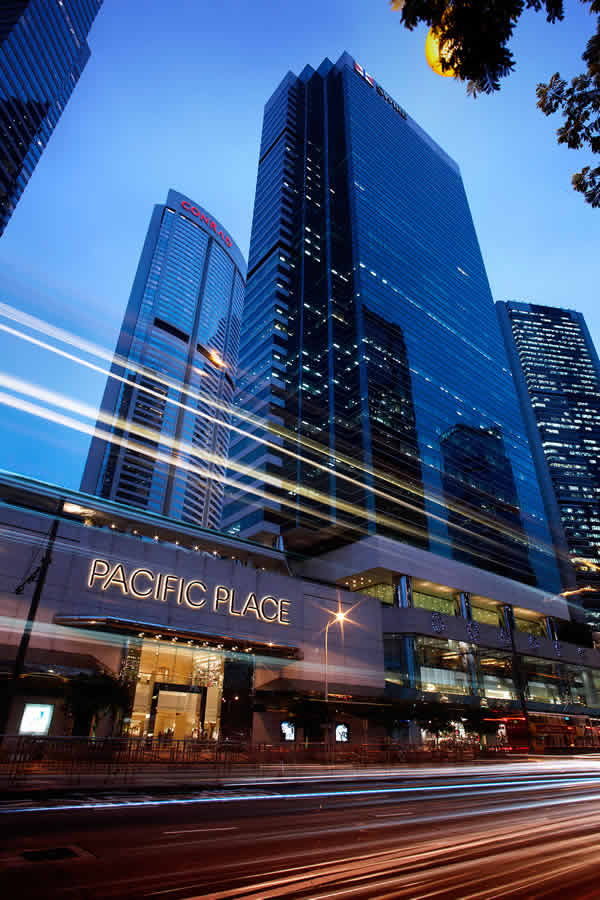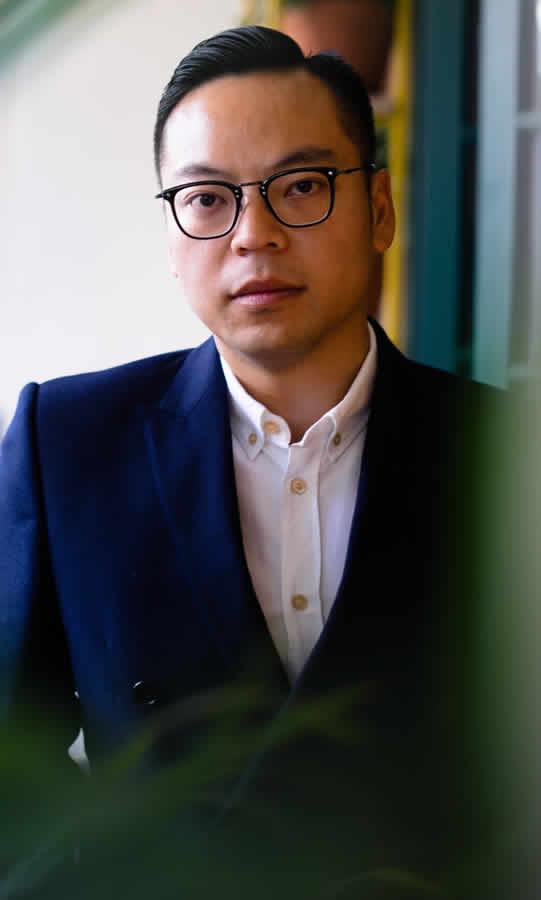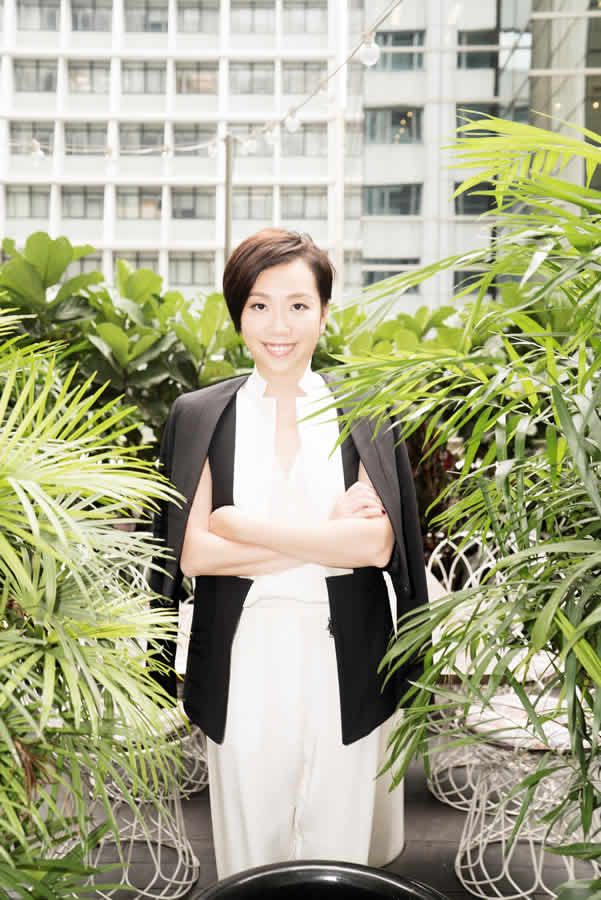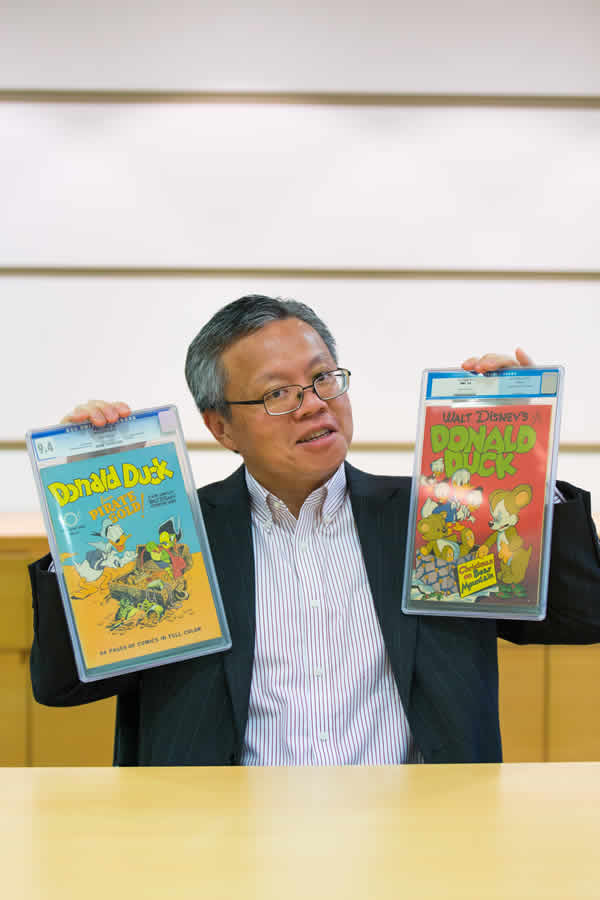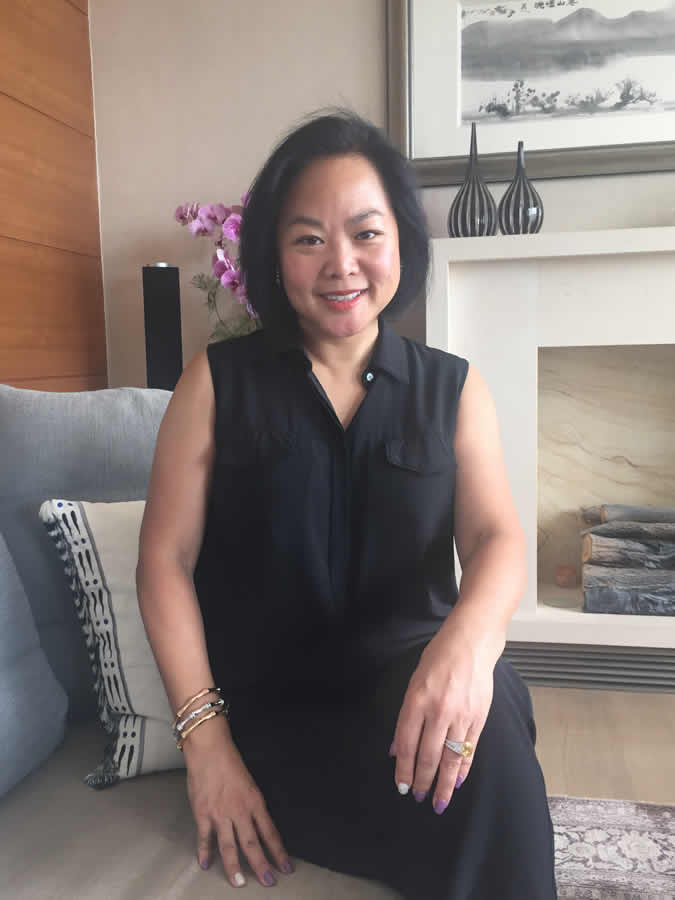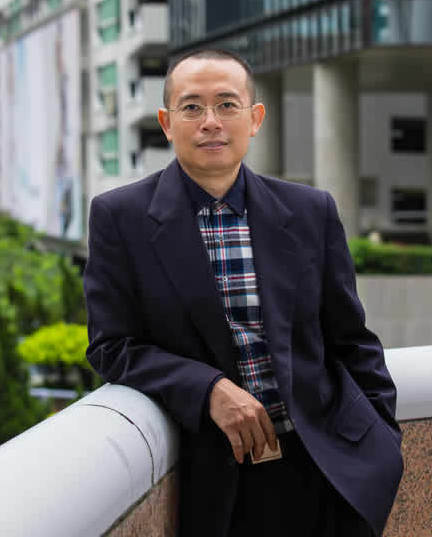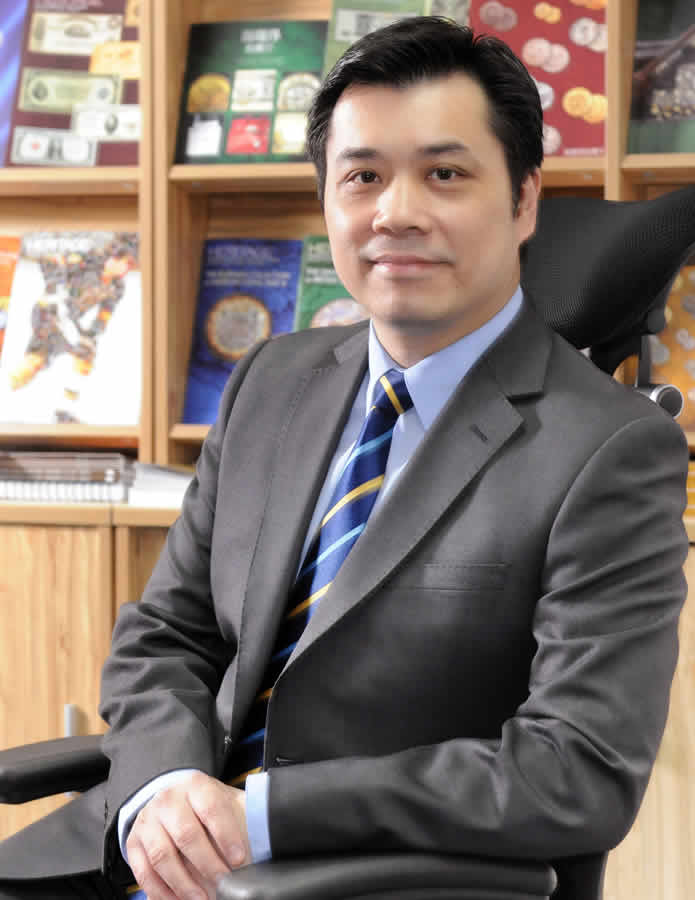ASIA’S VIBRANT ECONOMIC HUB BURNISHING ITS REPUTATION FOR FINE DINING, MODERN ART AND DEDICATED COLLECTORS
By Edward Kiersh
Bathed in shimmering lights bouncing off the iconic skyscrapers dotting the Hong Kong’s renowned financial district, the Berlin-born chef is poised to perform his nightly wizardry.
“This is my stage, my proving ground,” says the details-obsessed Bjoern Alexander of his Twenty Six by Liberty, an inventive 26th-floor dining experience featuring tender suckling pig, smoked eel with caramel candy, pigeon with rose petals, sea urchin and hours of theatrics.
“Hong Kong’s extremely competitive,” Alexander says, “a highly cutthroat restaurant environment, where space is so costly you must have energy, be addicted to creating art, the unique, the sensual. If you sleep you die.”
Enlarge
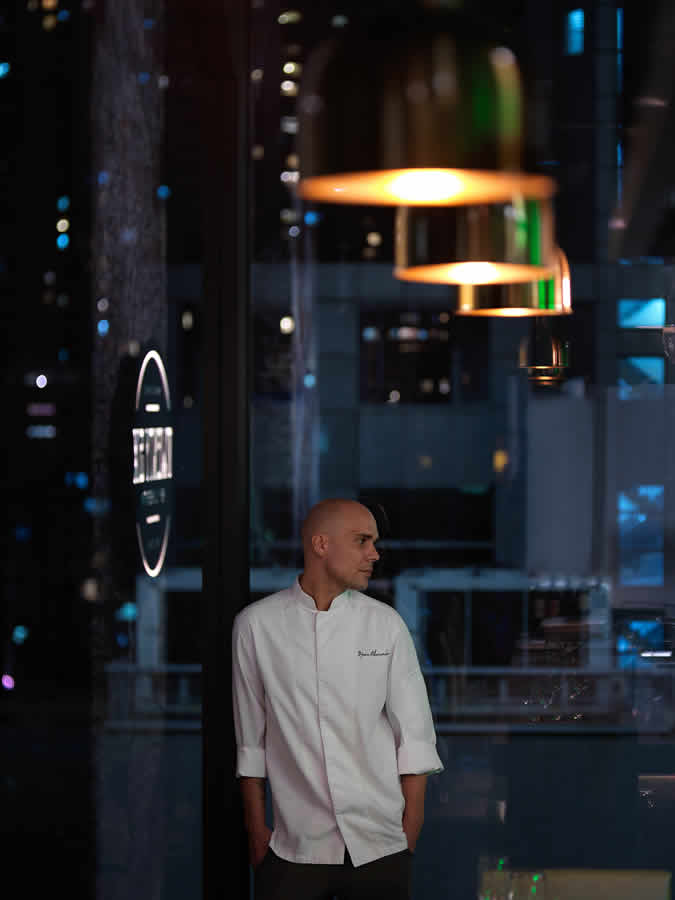
In a city where art, real estate, banking and constellations of restaurants are dominated by oligarchic-styled networks, it’s easy to see how energy and relentless ambition are key.
Especially if Alexander hopes to realize his dream of winning Michelin-star stature for his new restaurant — and becoming a celebrity like so many other young talents now making the city the chic, white-hot destination for mixology, art and cuisine.
Ever-exciting and ever-evolving, this “Mecca of the East” offers artists a premium platform at the recently inaugurated Art Basel exhibition. “With all the new spaces and exhibitions, the city is becoming an incubator of dreams,” insists collector and Para Site art space board member Alan Lau, who as co-chair of Tate’s Asia Pacific Acquisition Committee helps acquire contemporary art for that London museum. “The [still in planning] M+ Museum [of contemporary art] is another huge development, one that’s helping create the West Kowloon Cultural District, the confluence of West and East cultures.”
Aspirations clearly abound in this former British colony now classified as an autonomous territory by its Communist China rulers. As recent protests show, many of those yearnings focus on political freedom. But visitors have other longings. To fulfill them, they must flaunt another sort of energy, the relentless stamina to absorb constant jostling by shopping-maddened crowds and the willpower to resist endless eye candy.
What awaits the intrepid? A ceaseless parade of Prada, Patek Philippe, Armani, Tory Burch and Ermenegildo Zegna. They’re prominent at such enticing vertical malls as the five-level Landmark; the 700-store Harbour City; Pacific Place, which affords views of Victoria Harbour; IFC Mall, with its rooftop garden; and 1881 Heritage, the 1880s Former Marine Police Headquarters Compound where pirates and smugglers were held.
“Besides finding treasures, collectors will discover that Hong Kong is very friendly to buying,” says Oi Ling Chiang, owner of Oi Ling Fine Chinese Antiques. “My shop is romance, and the city’s [monetary] policies invite collectors to enjoy it.”
Another restored compound, PMQ (Police Married Quarters) veers away from the city’s slavish luxury brand addiction to offer far quirkier shops. Showcasing young designers, chefs and craftspeople, this “create-preneur” hub is found, like many major attractions, in a district known as “Central,” close to a must-see string of antique shops along bustling Hollywood Road.
In addition to being a tranquil retreat from the city’s flaming neon, PMQ is a hip, Instagram-worthy hangout for multi-layered cupcakes, organic food, indie boutiques and nonstop people-watching.
The nearby Oi Ling Antiques emporium is a more old-fashioned escape from the frenetic rhythms of a city seemingly bent on reinventing itself. Crammed with furniture, bronzes and pottery from the Ming and Qing dynasties, this shop is dedicated to rare historical discoveries. Yet whether it’s antiques, art, wine or whatever the luxury item, they all share a common seduction: None of them carry a sales or value-added tax in this free port city (import duties are imposed on very few goods).
“Besides finding treasures, collectors will discover that Hong Kong is very friendly to buying,” says Oi Ling Chiang, Oi Ling’s owner. “My shop is romance, a respect for history, and the city’s [tax] policies invite collectors to enjoy it.”
But many aspects of Hong Kong’s rowdy, even shabby past are disappearing. Few tea houses remain, and once cacophonous street markets have become dull and gloomy, glutted with touristy souvenirs.
Enlarge
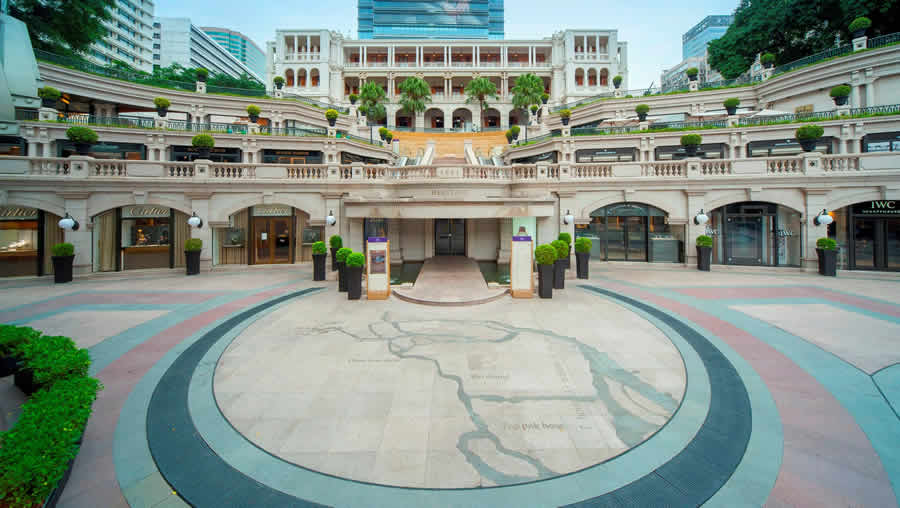
Purchasing a bespoke suit from a Hong Kong tailor has long been a visitor’s staple, even a cliché. But there are no more bargains.
It is still possible to recapture a bit of historical magic by chartering an ancient Chinese sailing ship known as a “junk.” Sailing in the South China Sea, past steep mountains and sheltered coves, is a hypnotic way to savor the area’s remarkable panoramas.
Ascending in a rented helicopter, hurtling over the luxurious estates lining the hills near Victoria Peak, is similarly exhilarating. But even if it’s a far more pedestrian pleasure, there’s only one Hong Kong jaunt that must be experienced. Board the Star Ferry and appreciate the views of the constantly changing, always soaring skyline. It is a snapshot of the mighty, world-beating China.
FEVERISH FOOD SCENE
After delighting his guest with a Liguria scampi bathed in tomato and herbs, followed by a velvety baby lamb, the maestro is ready to chat about his 3-Michelin star life at 8½ Otto e Mezzo Bombana restaurant on the second floor of Landmark Alexandra.
“I loved Fellini’s [1963 biographical classic] 8½ film so much, I had to name my restaurant after it,” says burly Italian transplant Umberto Bombana, grinning broadly as if 14 hours in the kitchen is his paradiso.
“The restaurant scene in Hong Kong is very tough. So many places open and close in six months. The survival rate is 30 percent. But I love this international city. The people are very sophisticated. They appreciate my being the ‘King of White truffles.’”
Enlarge
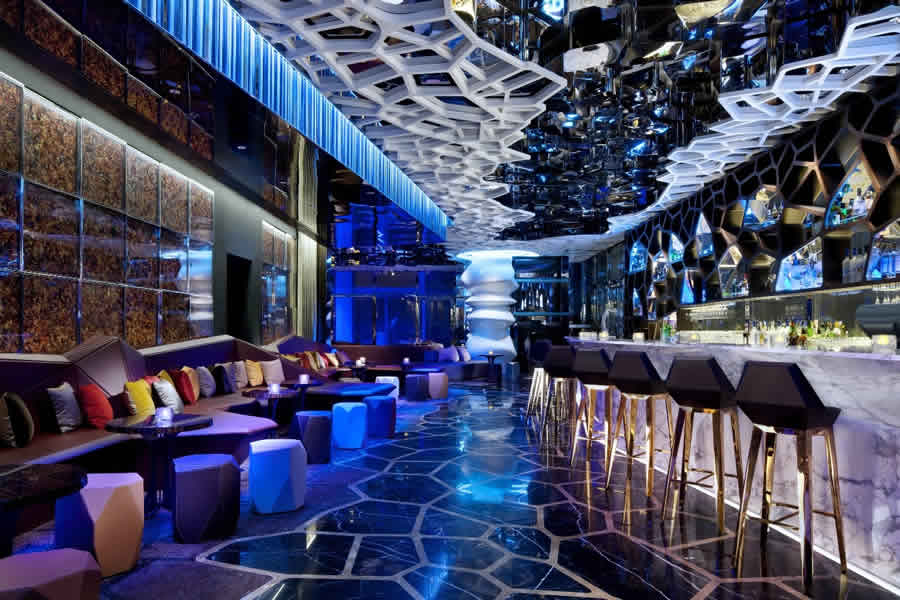
Bombana is a bombastic, larger-than-life figure. But Hong Kong demands distinctive artists who are incessantly improvising, hoping to discover the next hot “fusion” concept that will generate buzz.
The city’s food scene is so feverish that visitors face a vexatious conundrum. Where to go? If not dim sum or one more roast duck, which places promise memorable dining?
Little Bao provides a few Szechuan-flavored, finger-licking answers. Even if it means braving long lines, this stool-only, thimble-sized, truffle-fries-and-pork-belly-bun “joint” rocks with spicy treats. The place to unravel the mysteries of the vegetarian Sloppy Chan and Shaoxing wine Drunken Clams.
Crispy salt and pepper squid, spicy tuna rolls and kaffir lime chicken are the Vietnamese sensations at Chôm Chôm, another pint-sized treasure that draws adoring crowds. Evocative of a Hanoi pho bar, this frenzied SoHo eatery dotes on crunchy textures, smoky flavors and fragrant spices. Live dangerously and try the Cha Ca Hanoi, a white sole fillet spiced with turmeric and dill and served with vermicelli.
Clearly emphasizing that space is at a premium in Hong Kong, Ding Dim 1968 reverts to long-ritualized dim sum traditions, and reinvents these pork and shrimp buns with aromatic black truffle hints of genius. “All these creations are from Master Black, my uncle,” insists owner Alex Chau, a retired stock broker. “Even if the Chinese economy is down, people have to eat, and we have the best dumplings in town.”
Traditional Cantonese cuisine with modern accents has won chef Kwok Keung Tung accolades at The Chairman. He’s reputed for his flowery crab with Shaoxing wine and the braised spare ribs. The refined service is a throwback to colonial British elegance.
Far edgier with lots of bronze, industrial copper and sparkling glass panels, Ammo, a former ammunitions bunker, serves exquisitely prepared cocktails, fish dishes and Mediterranean-influenced pastas.
Enlarge
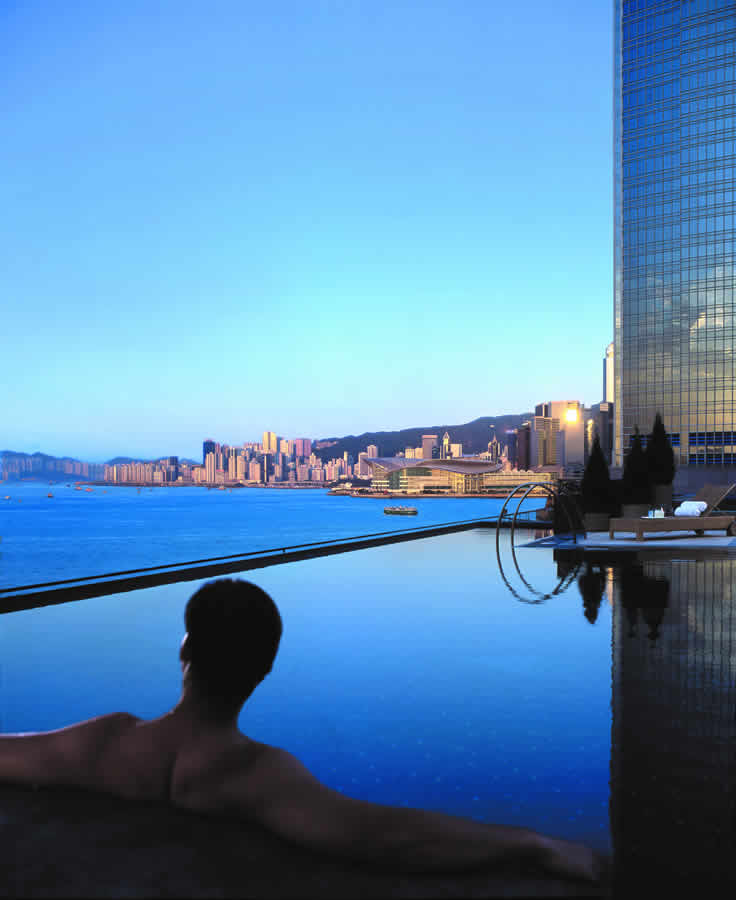
Another subterranean hideaway, Mott 32, is lively and magnetic, echoing the vibe of a 1920s speakeasy. It’s also dark and intriguing with a bustling open kitchen spewing out Alaskan King Crab, Wok Fried Duck with Scallions, and a Buddha Jumps Over the Wall soup. Best of all, the barbecued Ibérico pork is lacquered with sweet Yellow Mountain honey. It’s unforgettable.
Hong Kong power couple Yenn Wong and Alan Lo also have a Midas touch for creating crowd-pleasing hot spots. Their Aberdeen Street Social cafe with an outdoor patio is perfect for people-watching at PMQ, and the British-accented menu features Wagyu sirloin, roasted rack of lamb, and butter poached lobster. The chocolate and peanut bar with banana ice cream is a final reminder that the Hong Kong dining scene is an awe-inspiring universe.
BEWITCHING CHARM
Known as the “View of the Dragon,” the vast panoramas of Victoria Harbour from Lung King Heen restaurant in the Four Seasons Hotel cast such a bewitching charm that time seems to stand still.
But even more remarkably, the hypnotic flurry of activity in the harbor pales next to the 3-Michelin star delights created by executive chef Chan Yan Tak. The first Chinese chef to win Michelin’s highest honor, he’s best known for his prized Bird’s Nest plates; Abalone in Oyster Sauce; and Crispy Marinated Pork. He’s one of the city’s prime attractions, and even if one of these feasts is a three-hour luxury, it by no means should be missed.
In addition to boasting a unique brand of personalized service, beautifully scented spacious rooms, and a calming outdoor pool, the highly attractive the Langham Hong Kong serves up its own Michelin-starred intoxications at T’ang Court. Wonderfully located only a few minutes from the Star Ferry, this elegant, Art Deco-inspired destination serves fabulous Blue Point oysters, sautéed prawns and crab roe, and equally memorable lobsters.
Trendy and hip with contemporary design features like pink lighting and splashy-colored rooms, the Mira Hotels’ Cuisine Cuisine returns to splendid Cantonese cooking traditions. In this sleek and always-festive eatery, appetizers range from soft shell crab to pork belly rolls. Marinated ducks, Bird’s Nest and Alaskan crab meat inside a baked creamy Japanese pumpkin are not just superb main courses. They are artistic triumphs, inspirations mirroring the Mira’s beguiling and ultra-cool design.
No matter what the liquid refreshment craving, Hong Kong nights are filled with promise.
Little wonder “The Optimist” has won mixology awards at international contests. The specialty of 8½ Otto e Mezzo bartender Devender Sehgal, it’s an exhilarating mix of Bacardi Carta Blanca, basil leaves, honey water and fresh lime juice honored with a glass rinsed with yellow Chartreuse.
Enlarge
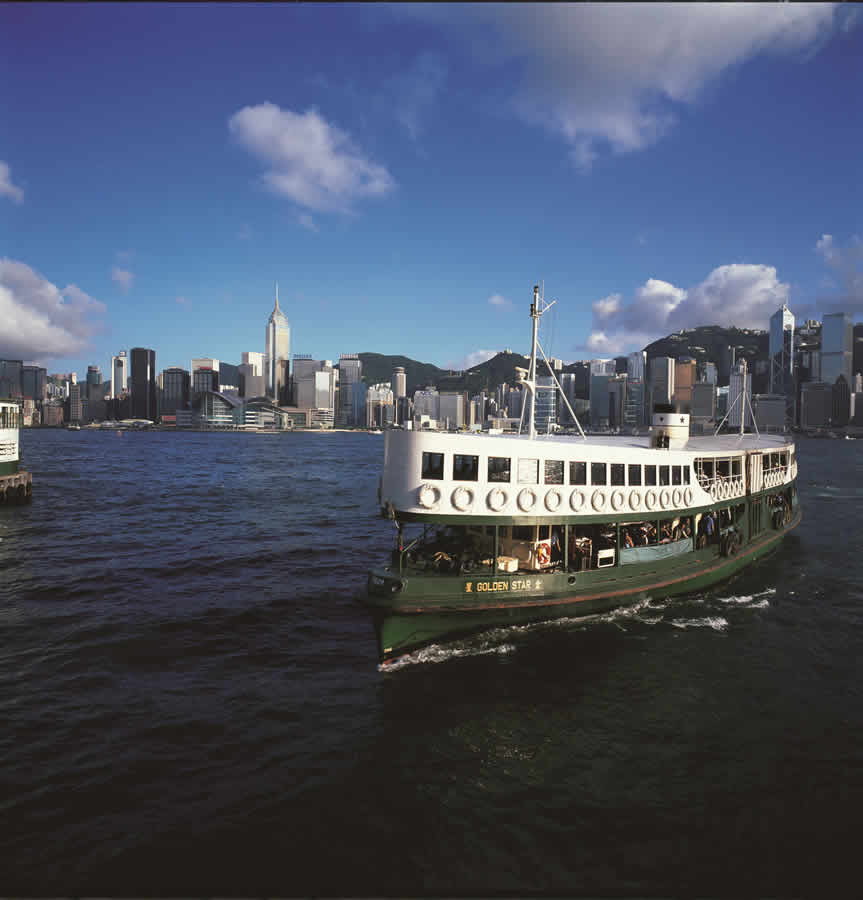
Another stunner, Ozone, the world’s highest bar on the 118th floor of the Ritz Carlton in the International Commerce Centre building, greets revelers with an extensive wine list. The Wooloomooloo Steakhouse in the Wan Chai District provides other mesmerizing panoramas, along with a wide selection of Cabernets and Australian varietals. The Envoy and Quinary are other wine havens. Yet sitting almost atop the harbor, the elegant Caprice in the Four Seasons Hotel is picture-perfect for celebrating the velvety charms of a Gevrey-Chambertin Les Evocelles or a floral Condrieu Coteau du Chery.
More than 80 wine varieties, including a bright and citric Riesling Jubilee, await an eclectic crowd at the sparkling, amber-accented Riedel Room at Q88 in the JW Marriott Hotel. It’s close to the always-throbbing Lobster Bar, known for “martini magic,” and the equally animated MO Bar at the Landmark Mandarin Oriental, where an endless array of sakes, Bordeaux and Burgundies complement the bar’s masterful mixologist.
Interior designer Joyce Peel enlivens her Orange Peel lounge with live music and her signature tequila/Prosecco concoction known as “Joyce Is Not Here.” The absinthe and pineapple “Green Fairy” is the sin of choice at the intimate, 1950s-themed Varga Lounge, and the Polynesian Honi Honi Tiki Cocktail Lounge with its “Curse of the Monkey” deviltry in the form of coco, rum, and strawberry liqueur is another adventure.
But for a retro sense of a speakeasy, go to Lily & Bloom, where all sorts of shaking and stirring complement an eye-catching parade of wonders.
After such a staggering romp, if one drink is still on tap, opt for the bold and reckless at the Brickhouse. It’s virtually impossible to find at the end of a dark and foreboding alleyway. But the tequila is powerful, and so is the energy at the bar. Make new friends, and dance the night away.
Alan Lo and Yenn Wong have turned their Duddell’s restaurant into a creative hub. “We purposely allow our curators, who have no agenda, to select the art,” Wong says, “to keep exhibitions … totally open to all sorts of visions.” Photographs courtesy JIA Group and Laurent Segretier.
“Hong Kong Has Always Been a Collector’s Scene”
POWER COUPLE ALAN LO AND YENN WONG BELIEVE ART NEEDS FREEDOM TO FLOURISH
It’s impossible to know what Mao Zedong would think about his new prominence. Would the once-mighty Chairman appreciate his likenesses on the walls of Duddell’s, one of Hong Kong’s more popular hangouts? Or would the communist revolutionary be shocked by this display in a trendy, far-from-proletarian supper club?
One thing is clear.
This trendy yet elegant restaurant-cum-cocktail lounge attracts a high-powered and laid-back elite – fashionistas, designers and media types at the center of Hong Kong’s art scene.
Duddell’s super-enterprising husband-wife team, Alan Lo and Yenn Wong, control 13 varied eateries (one with 10 branches). They have uniquely turned their flagship Duddell’s into a transformative art force. Once a cultural desert, Hong Kong is now on the international art map, thanks in part to the projects and exhibitions curated and shown at Duddell’s.
Sitting next to Mao and numerous ideological posters from China’s mid-20th century revolution, Lo, 36, a Princeton graduate, says Hong Kong’s art scene “went from zero seven years ago to a totally new dynamic with many exciting ecosystems.”
How did this revolutionary change occur? “Hong Kong,” Lo says, “has always been a collector’s scene … ceramics, antiques, contemporary paintings. Foreign dealers and serious collectors came here, and that’s when Yenn and I felt there was a need for them to converge with artists.
“Duddell’s is meant to be a place with a neutral agenda, where no art is being sold, nothing promoted commercially. It’s supposed to be a meeting ground for conversation, since art needs room, it needs air to grow.”
While Duddell’s stirs that conversation, the risk-taking property developer has been active on numerous fronts to make Hong Kong a cultural magnet. An eclectic collector of ethnic Vietnamese art, American paintings, controversial Chinese artist Liu Wei, contemporary Belgian artist Harold Ancart, and books featuring work by Andy Warhol and Jean-Michel Basquiat, Lo is constantly traveling to arrange collaborations with such institutions as London’s Institute of Contemporary Arts and the Dallas Museum of Art.
He is now encouraging the development of an artist-driven space with a residency program and library in Kowloon, Hong Kong’s “Dark Side” or “most authentic place.” “I like to bring about content, alternative platforms to get conversation going,” says Lo, a member of Art Basel’s Global Patrons Council.
“We did a show with [Chinese contemporary artist and activist] Ai Weiwei remotely, a tele-conferencing,” Lo says, “since he couldn’t get out of China, and that spurred ideas, got Duddell’s started.”
At this point, Yenn Wong interjects: “An art gallery can be intimidating. Yet at Duddell’s, art is a social environment. It’s approachable here. We purposely allow our curators, who have no agenda, to select the art, to keep exhibitions like these posters totally open to all sorts of visions.”
That type of objectivity, with no vested interest in selling art, has allowed Lo to become a pivotal force in Hong Kong art circles. He’s a member of the city’s Arts Development Council, and is constantly traveling around the world to promote the city’s allure as an art destination.
But even this unabashed art ambassador recognizes the potential for dark clouds on the horizon.
“Now we have freedom of expression, that’s the edge we have,” Lo says. “Yet we are still part of China, so we have a sort of self-censorship. Art still needs that air, freedom to flourish, but if that freedom is put at risk, it will definitely impact Hong Kong globally.”
“Collecting comics is not about money, or a recession-proof investment,” says Timothy Hui, with some of his prized books. “It’s simply about great art.” Photograph by Simon Kwan Photography.
Finding Deep Emotional Value
FOR TIMOTHY HUI, COMICS ARE HOW HE KEEPS IN TOUCH WITH HIS AMERICAN ROOTS
Delicately placing a near-mint 1942 Donald Duck comic book on his desk, Timothy Hui cheerfully recounts why this slabbed rarity and other five-figure gems in his collection bring him great joy.
“It has nothing to do with escalating values, the market being very strong these days,” says Hui, 52, the general counsel for a Hong Kong pharmaceutical firm.
Reaching for another of his prized comic books, DC’s Legion of Super Heroes, Hui continues: “These books kept me connected to American culture. Sure, I love the art and finding pristine-condition items that contribute to a valuable collection. But most importantly, these books have always had a deep emotional value to me. I was born in Hong Kong, but my father, an American, kept getting assignments taking us to places like Korea and Taiwan, so I grew up in isolation. Comics were my American attachment.”
As he displays other comics in his collection, assembled with assistance from Heritage Auctions’ Senior Vice President Ed Jaster, it’s clear that Hui is enthralled by certain artists. Illustrators like Carl Barks, Frank Frazetta and Jack Kirby evoke deep nostalgia for him. They also prompt him to chase “big-ticket books” – those over $10,000 with a superior CGC grade. “These books,” he says, “definitely provide the thrill of the chase.”
“Tim is a discerning collector with an eye for quality,” Jaster says. “In my experience, Tim tends to collect with his heart rather than blindly following trends.”
After 40 years of collecting Tarzan, Justice League of America, items from the Golden Age, and DC’s The Atom, Hui doesn’t discount the importance of auctions. Yet he essentially depends on a small network of fellow collectors to find significant rarities. “You talk to other collectors,” he says. “You can’t collect in a vacuum. But you must keep your cards close to the vest. People in my world would raise their prices if I disclosed what I really want. There aren’t any buddies in this market.”
So it’s no surprise that Hui thrives in isolation, hoping to discover another near-mint treasure.
“Collecting comics is not about money, or a recession-proof investment,” he says. “It’s simply about great art, characters doing ethical things and holding on to your childhood.”
Shirley Chiu collects couture jewelry and Patek Philippe watches, but wine holds a special place. “I’m collecting,” she says, “because wine is opening all parts of the world to me, as wine is all about discovery.” Photograph by Ng Ming Yi.
“Wine is Meant to be About Feelings, Friendships”
SHIRLEY CHIU AMONG THE CITY’S CONNOISSEURS SEEKING WINES WITH A DEFINITIVE PERSONALITY
As the Chinese economy weakens and Hong Kong’s retailing sags a woeful 12 percent, the interest in collecting premium Bordeaux and Burgundies continues to surge.
Is the taste for such elite names as Petrus, Lafite Rothschild and Domaine de la Romanée-Conti simply a meteoric frenzy? Or will this thirst for vaunted reds (the dominant favorite since the Chinese feel it’s a “lucky” color) be a lasting sign of sophistication for the affluent?
Calling this relatively new fascination a social currency that allows enthusiasts “to share quality and embrace magic,” Heritage Auctions’ Director of Fine and Rare Wine Frank Martell (who once advised the Hong Kong government on wine policies) believes wine culture here will continue to flourish.
Hong Kong’s reduction of import duties to 0 percent in 2008 has certainly contributed to that growth. But downplaying the importance of wine’s investment (or ego gratification) value, Martell maintains “the passion for wine in Hong Kong is truly a passion, [not] a trophy hunt. People love sharing a wide variety of bottles, and that bon vivant culture is contagious.”
A collector of haute couture jewelry, well-crafted Patek Philippe watches and, of course, vintage wines such as Masseto, Cros Parantoux, and La Tâche, Shirley Chiu is one of those passionate enthusiasts who is keenly interested in expanding her palate and sharing her discoveries with others.
“Shirley is everything that is right about a wine collector,” Martell says. “She’s passionate about the hedonistic side of the hobby, but moreover, she has an academic curiosity that transcends the image of wealthy trophy hunters. She’s a complete wine lover and a model for all who wish to be.”
A CPA-turned-equity sales and wealth management specialist who is now retired, Chiu is devoted to seeking out wines with “a definitive personality, those that display terrific craftsmanship, and have complex intricacies which can be discussed with friends.”
Constantly traveling to Spain, France and Italy to discover new favorites, especially single grape varietals that deliver “great taste, complexity and a long finish,” Chiu insists, “I’m collecting because wine is opening all parts of the world to me, as wine is all about discovery. A very small part of my collection [of about 10,000 bottles] is for investment. That there are no import duties certainly attracts people, but I’m in this for the taste, new experiences.”
Advising aspiring collectors to focus on a wine’s drinkability, not its money-making potential, Chiu cautions: “It’s a lot of work to manage a wine collection. Seek out expert advice. Don’t buy too much of your first love, don’t be stubborn, for you will find other loves. Join a wine club and travel to different wine regions.”
During these jaunts, Chiu and members of her Wine Forum club show a unique sort of devotion to the localities.
“Wine,” she concludes, “is meant to be about shared feelings, friendship, so the Wine Forum holds charity auction dinners, and donates the same amount of money to local charities as members spend on wine purchases. That only adds to the beauty of collecting.”
In an area fraught with counterfeits, Kenneth Xiao finds peace of mind dealing with an auction house. “Auctions are a fair game,” he says. “There’s efficiency, transparency, while in private selling there’s more chance of trickery, fraud.” Photography by Simon Kwan Photography.
The Fervent Completist
KENNETH XIAO SEES NOTHING BUT GROWTH IN THE HONG KONG COIN MARKET
The mainland China real-estate lion is running late.
“He’s at the vault, he’s coming. He just had to pick up a few things,” soothes Kenneth Yung, Heritage Auctions’ director of Asian operations.
Kenneth Xiao is among the city’s most respected coin collectors. “Mr. Xiao,” Yung says, “is known for owning coins in brilliant condition.”
A few moments later and Xiao walks in, carrying six heavy containers of top-graded, high-value items.
Apologizing for being late, the 36-year-old Shenzhen native laughs. “Even though my wife thinks I’m crazy buying so many coins, I love them. I started reading books about prized Chinese coins 14 years ago. I was fascinated. Not really concerned about the investment potential, I liked the history, the culture of coins.”
Holding a treasured 1926 General Zhang Zuolin, Republic of China silver coin, the proudly smiling Xiao allows Yung to translate his feelings about collecting.
“The hunt for a coin like this Zuolin, or this Pattern Dollar graded PCGS 68 with such fine details and toning, is very exciting,” Xiao says. “That chase is all about judging quality, condition of a coin. I’m always looking to sell a coin if I can find it in better condition. Condition is everything.”
Along with the satisfaction of sharing knowledge and showing choice coins to fellow enthusiasts, Xiao is on a definite mission.
Eyeing an office copy of the Illustrated Catalogue of Chinese Gold and Silver Coins, this avid auction bidder who takes great joy from contributing sycee (an ancient Chinese silver or gold ingot currency) to museums admits to being a fervent completist.
“I really want a complete collection of many coins, and to accomplish that, I really like auction bidding,” Xiao says. “Auctions are a fair game. There’s efficiency, transparency, while in private selling there’s more chance of trickery, fraud. With Heritage, I trust what is offered. Heritage has the most developed, sophisticated online bidding website.”
“Fakes are a real big problem today,” Yung interjects. “The counterfeiters are getting much better.” Even so, Yung adds, “Quality coins are always a great investment, as Kenneth knows.”
Xiao again dips into one of his containers.
“This plain edge, copper Pattern Dollar [valued at $2 million and picturing Chinese leader Sun Yat-sen] is the only one known in the world. It’s thrilling to find great rarities.
“But my greatest mission,” Xiao says, “is to start my own grading company. I want to establish certain standards for the world, especially for ancient Chinese coins. Knowledge is so critical to collectors. And I hope to provide it.”
“[Heritage Auctions has] always focused on personalized customer service, a transparent platform and a top-rated bidding system,” says Kenneth Yung. Photograph courtesy InvestHK.
Setting Up Shop in Hong Kong
DIRECTOR OF ASIA OPERATIONS KENNETH YUNG SEES HERITAGE AUCTIONS AS A NATURAL FIT FOR REGION’S COLLECTORS
Late last year, Heritage Auctions opened its Hong Kong office and appointed Kenneth Yung its director of Asian operations. The auction house plans to hold two auctions per year focusing on world coins, though Heritage has made it clear the new location makes it more convenient to take in material across all 40 of its categories. We spoke to Yung about the new location and Hong Kong collectors.
Describe Hong Kong collectors. What categories are people collecting?
Hong Kong is a mature and strong collectors market, with lots of Asia’s top collectors living here. Other than numismatics, people here are collecting fine art, paintings, luxury accessories, jewelry and antiques. We’re finding that many collectors are interested in different categories. For instance, people who collect numismatic items also are collecting wines, jewelry and paintings.
Why did Heritage choose Hong Kong for its Asia location?
It’s wonderful that Hong Kong provides an open market, a free port and simple custom procedures. Asia, as you know, is a growing market, and we expect collecting will only grow in the coming years as economies grow more robust in this corner of the world.
So what’s the specialty of Heritage’s Hong Kong office?
We handle all the categories familiar to our clients … comics, wine, entertainment memorabilia, jewelry, timepieces. But a main focus is Asian coins and banknotes from across the region … Bhutan, British North Borneo, Burma, Cambodia, Ceylon, China, French Cochinchina, French Indochina, Hong Kong, Indonesia, Laos, Macau, Malaysia, Mongolia, Myanmar, Sarawak, Singapore, Straits Settlements, Sumatra, Taiwan, Thailand, Tibet and Vietnam.
What services are provided at the Hong Kong office?
We are a full sales and operation services center, also accepting consignments. We have offices across the United States and Europe, and now the Hong Kong office makes it easier for us to more directly service our Asian clients and bidders.
What makes Heritage’s Hong Kong office unique among auction houses?
We’ve always focused on personalized customer service, a transparent platform and a top-rated bidding system. Our Asian clients can now experience this firsthand.
Heritage’s Hong Kong office is located in the Admiralty District, Unit 1105, 11/F Tower One, Lippo Centre, 89 Queensway Road, Admiralty, HK. Yung can be reached at KennethY@HA.com.
EDWARD KIERSH collects first-edition books and gold coins. He has written for Cigar Aficionado, Vogue and The New York Times.

